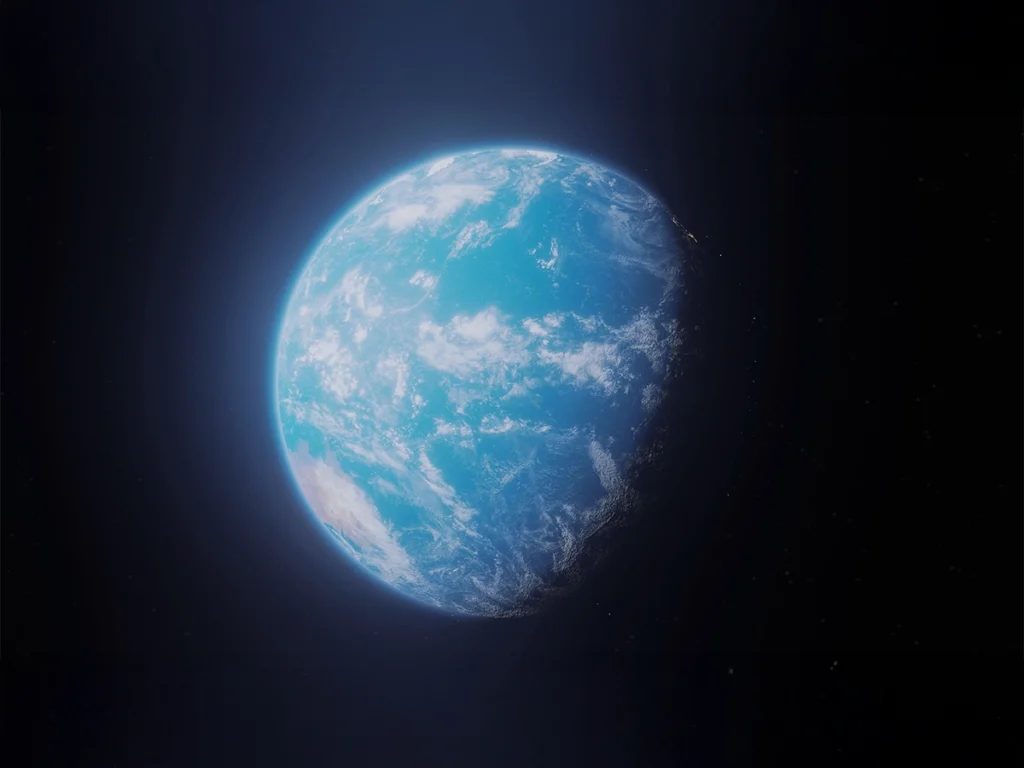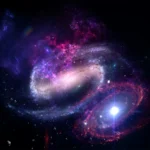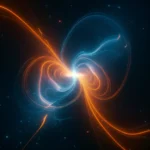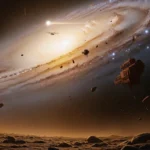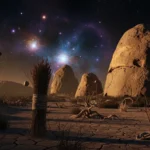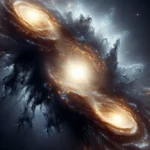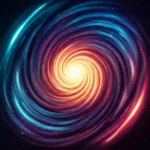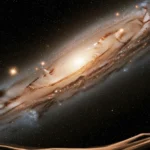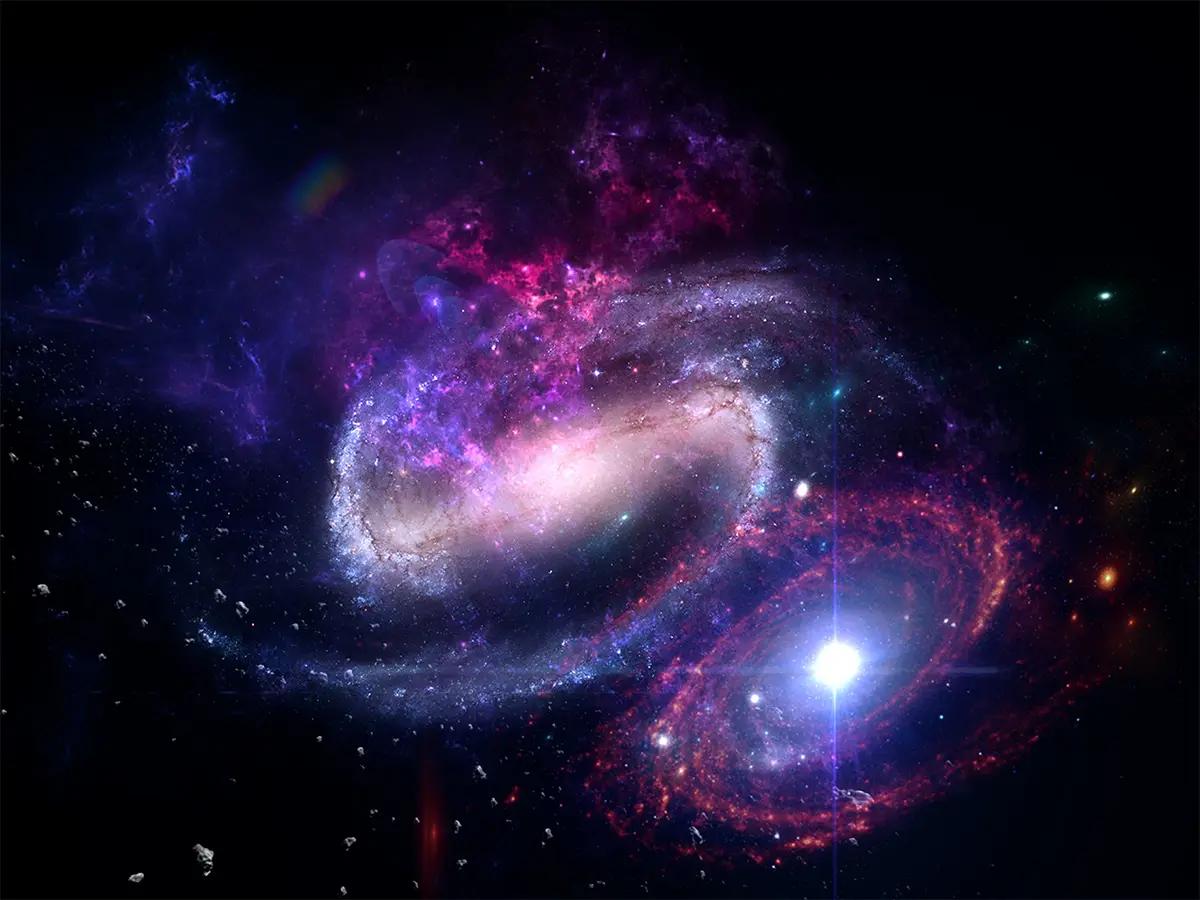For centuries, humanity has wondered if we are alone in the universe. With modern telescopes and space missions, that question is slowly moving from speculation into science. Recently, the exoplanet K2-18b, located 124 light-years away in the constellation Leo, has taken center stage. Scientists have received tantalizing atmospheric signals suggesting this world could host liquid water and possibly even the chemistry of life.
What Is K2-18b?
K2-18b was first discovered in 2015 by NASA’s Kepler mission. It is a planet orbiting a small red dwarf star and lies in what astronomers call the habitable zone—the region where conditions might allow water to exist as a liquid.
Unlike Earth, however, K2-18b is much larger—about 2.6 times Earth’s radius and over eight times its mass. This places it in the category of a “super-Earth” or “sub-Neptune.” Planets of this size are not found in our solar system, so understanding them is one of astronomy’s newest frontiers.
Despite its differences, K2-18b orbits its star at just the right distance to potentially support oceans. That’s why it has fascinated scientists since its discovery.
The Case for Water
In 2019, the Hubble Space Telescope provided the first strong evidence that K2-18b’s atmosphere contains water vapor. Even more compelling, the data hinted at the possibility of water clouds. This made K2-18b one of the first exoplanets where scientists could confirm both habitability conditions and atmospheric water—an enormous milestone in the search for life.
The discovery sparked interest worldwide. If water vapor exists in its skies, then K2-18b may also have oceans beneath, creating a potential habitat for alien life.
The James Webb Telescope’s Findings
The launch of the James Webb Space Telescope (JWST) gave astronomers the ability to study exoplanet atmospheres in unprecedented detail. When researchers pointed JWST at K2-18b, they detected signs of methane and carbon dioxide. Both of these gases are important because they are often linked to organic chemistry.
Even more surprising, JWST data suggested the possible presence of dimethyl sulfide (DMS) and dimethyl disulfide (DMDS)—compounds that, on Earth, are produced mainly by marine microorganisms. While this does not confirm life, it provides one of the most intriguing leads yet.
Why These Signals Matter
The combination of water, methane, carbon dioxide, and possible biosignature gases makes K2-18b a strong candidate for being a so-called “Hycean world.” These are planets covered by vast oceans, with hydrogen-rich atmospheres, that may support microbial life.
If confirmed, K2-18b would be the first Hycean planet identified with real evidence for potential habitability. That would dramatically expand our idea of where life can exist.
The Caution Scientists Are Taking
As exciting as these findings are, scientists urge caution. The atmospheric signals are faint and difficult to interpret. Statistical confidence is still below the gold standard required for scientific certainty. In other words, while the data is promising, it is not yet proof of life.
Astronomers are working on follow-up studies to confirm the signals. Reproducibility is key: if future observations detect the same gases, confidence in the discovery will grow. If not, the current signals may turn out to be noise or misinterpretation.
What K2-18b Tells Us About Habitable Worlds
Whether or not K2-18b is confirmed as habitable, it teaches us valuable lessons:
- Super-Earths/Sub-Neptunes Can Be Habitable: Until recently, scientists thought planets larger than Earth might be too hostile. K2-18b challenges that idea.
- Oceans May Be Common: If K2-18b is indeed an ocean world, then habitable oceans may exist throughout the galaxy.
- Life’s Signature Could Be Subtle: Detecting life is not about finding direct evidence but identifying patterns in atmospheric chemistry that are hard to explain without biology.
The Future of Exoplanet Exploration
K2-18b is only the beginning. As JWST continues its mission, and as new telescopes like the Habitable Worlds Observatory and LUVOIR are developed, astronomers will gain clearer pictures of exoplanet atmospheres.
Upcoming missions will be able to:
- Detect oxygen, nitrogen, and ozone—stronger biosignature gases.
- Map cloud layers and ocean possibilities on distant worlds.
- Determine whether Hycean planets are common or rare.
Each discovery will bring us closer to answering the greatest question of all: Are we alone?
Why the Public Is Excited
For the general public, the discovery of signals from K2-18b is thrilling. It makes the idea of extraterrestrial life feel less like science fiction and more like a real scientific possibility. Every new headline about this mysterious planet fuels curiosity, discussions, and debates across the world.
Could We Ever Visit?
At 124 light-years away, K2-18b is impossibly far for human travel with current technology. Even our fastest spacecraft would take millions of years to reach it.
However, studying planets like K2-18b helps us understand where to search for life and prepares us for the day when advanced technologies—like interstellar probes or massive telescopes—make it possible to directly study alien oceans.
Final Thoughts
K2-18b represents a new frontier in astronomy. With its water-rich atmosphere, possible biosignature gases, and position in the habitable zone, it is one of the most promising exoplanets ever studied.
But science moves carefully. Until repeated observations confirm the findings, the signals from K2-18b remain whispers from the cosmos—fascinating, mysterious, and full of potential. One thing is certain: as technology advances, our understanding of K2-18b and other habitable-zone planets will grow. Whether or not this world harbors life, it is helping us redefine what “habitable” really means.

